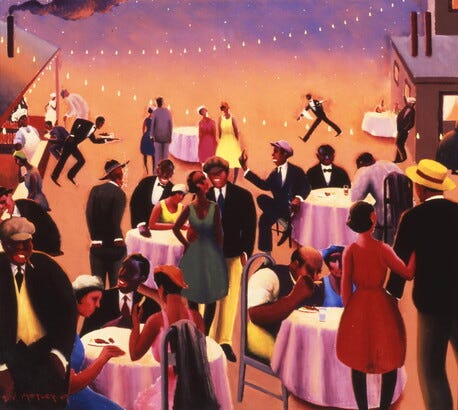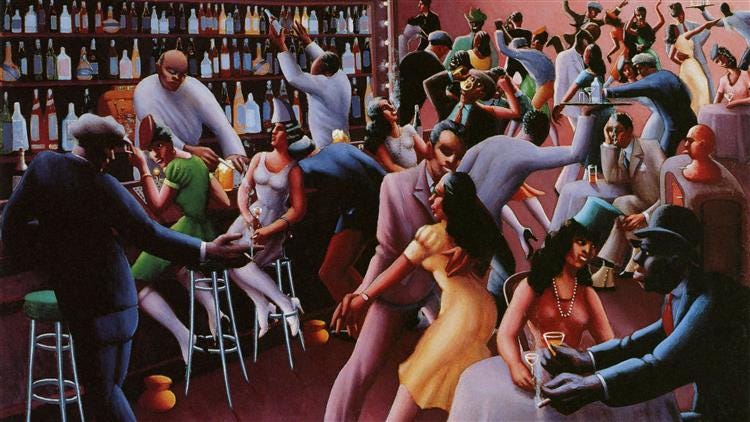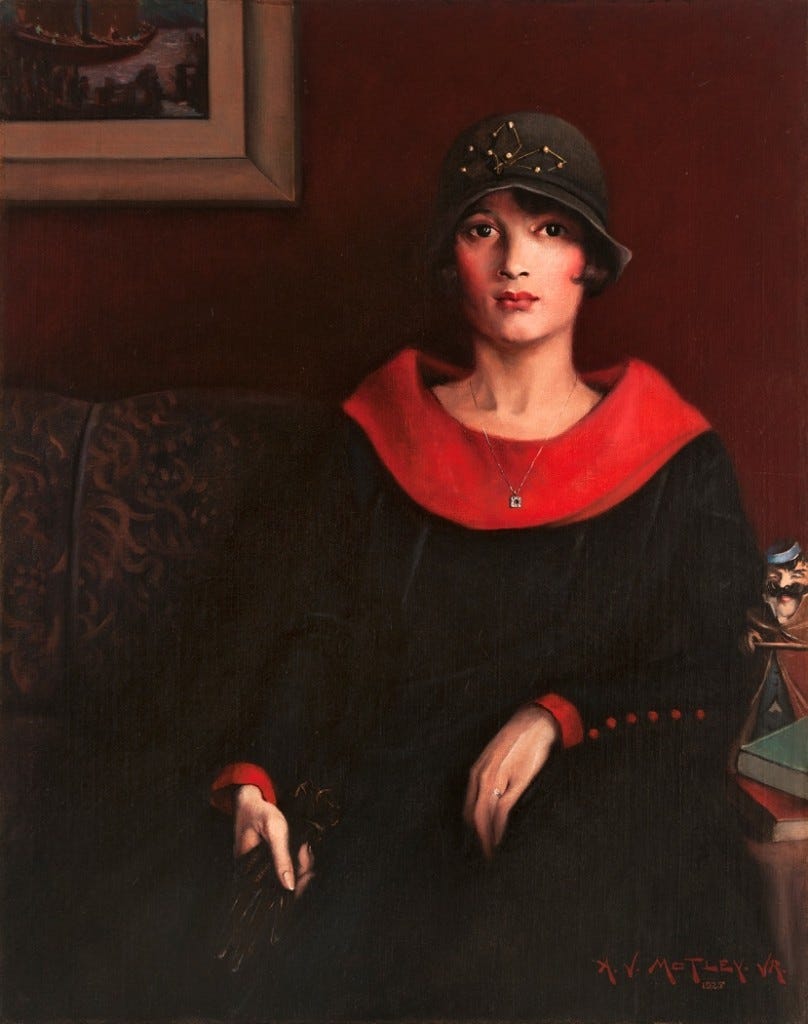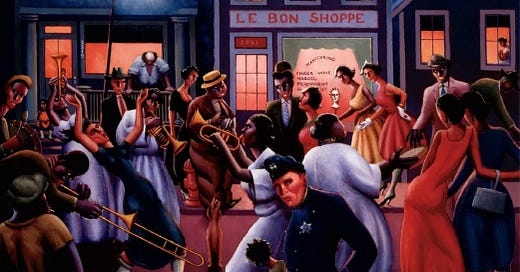
Archibald John Motley Jr. (1891–1981) remains one of America’s most significant painters for his dynamic and vibrant depictions of Black nightlife and everyday urban life during the Jazz Age. His work, which captures both the exuberance and complexity of African American culture, stands as a testament to the transformative power of art in challenging racial stereotypes and celebrating community. In a time of great social change, Motley used his canvases to document the rhythm, movement, and soul of Black life, creating images that continue to resonate with contemporary audiences and scholars alike.

Born in New Orleans in 1891, Motley relocated with his family to Chicago; a city undergoing rapid transformation and cultural ferment. Chicago’s thriving Black communities, particularly in the Bronzeville neighborhood, provided a rich environment that would later inform much of his subject matter. Motley’s formal art education at the School of the Art Institute of Chicago, from which he graduated in 1918, was crucial in developing his technical skill and aesthetic sensibility. Despite the pervasive racial barriers of early twentieth-century America, Motley’s talent and determination allowed him to forge a successful career, bridging classical training with a modern sensibility that celebrated the vibrancy of urban Black culture.

Motley’s artistic style is characterized by its bold use of color, fluid brushwork, and a keen eye for the dramatic interplay of light and shadow. His canvases often burst with the energy of a night out in Chicago, where jazz, dance, and social interaction converge. Works such as Nightlife (1943) serve as emblematic examples of how Motley captured the exuberance of Black social spaces. In these paintings, each figure is rendered with a combination of naturalistic detail and expressive exaggeration, underscoring the vibrancy and dynamism of the scene. Motley’s oeuvre extends beyond mere celebration; it also interrogates the social constructs and racial stereotypes of his era. His work frequently challenges the viewer to look beyond the surface glamour of nightlife and consider the underlying narratives of resilience and identity that define Black communities.

Navigating the complexities of racial representation, Motley often employed elements of caricature and exaggeration, techniques that have spurred extensive scholarly debate. On one hand, some critics suggest that his stylistic choices were strategic, making African American subjects more accessible to a predominantly white audience by using familiar visual tropes. On the other, his portraits, such as The Octoroon Girl (1925), demonstrate a deliberate effort to dignify and humanize his subjects, countering prevailing caricatures of Blackness in early twentieth-century art. Motley's nuanced approach to racial identity allowed him to address the contradictions inherent in American society: while celebrating Black culture, he also underscored the tensions and injustices that its members faced. His work, therefore, is not only a record of cultural life but also a subtle act of resistance against reductive stereotypes.
Archibald Motley’s legacy is firmly established in the canon of American art. His paintings are celebrated for their aesthetic innovation and cultural significance, with major exhibitions and scholarly works examining the impact of his art on discussions of race and identity. Phoebe Wolfskill’s Archibald Motley Jr. and Racial Reinvention: The Old Negro in New Negro Art (2017) provides an in-depth analysis of how Motley’s work both reflected and reshaped the narrative of Black identity during the Harlem Renaissance and beyond. Major institutions such as the Art Institute of Chicago and the Nasher Museum of Art at Duke University continue to feature his work in exhibitions that explore the intersections of art, race, and modernity. Additionally, scholarly articles published in journals such as American Art and the Panorama: Journal of the Association of Historians of American Art have further cemented his place as a key figure in modern art history. His contributions are seen as not merely artistic but also as pivotal cultural documents that capture the complexities of African American life in a period of rapid social change.

Archibald Motley’s body of work offers a profound commentary on the vitality and complexity of Black life during the Jazz Age. Through his vibrant canvases, Motley not only documented the pulsating rhythm of nightlife and community but also provided a counter-narrative to the prevailing stereotypes of his time. His art continues to serve as an enduring reminder of the power of creativity to illuminate, challenge, and transform our understanding of cultural identity. As we reflect on his legacy, it becomes clear that Motley's work is as much about celebrating life’s exuberance as it is about affirming the enduring strength and beauty of a community often relegated to the margins of history.
References:
Wolfskill, Phoebe. Archibald Motley Jr. and Racial Reinvention: The Old Negro in New Negro Art. University of Illinois Press, 2017.
Archibald Motley: Jazz Age Modernist. Nasher Museum of Art at Duke University, Duke University, www.nasher.duke.edu/exhibitions/archibald-motley-jazz-age-modernist/. Accessed 5 Jan. 2025.
Archibald Motley. Art Institute of Chicago, www.artic.edu/artists/33639/archibald-motley-jr. Accessed 5 Jan. 2025.
The Artist at Work: Symbolism in Archibald Motley Jr.'s Stunning Self-Portrait. Smith College Museum of Art, scma.smith.edu/blog/artist-work-symbolism-archibald-motley-jrs-stunning-self-portrait. Accessed 5 Jan. 2025.
Archibald Motley and the Depiction of Black Life in Early 20th-Century America. American Art, vol. 32, no. 4, Winter 2018, pp. 22–37. JSTOR, www.jstor.org/stable/10.2307/26485820. Accessed 5 Jan. 2025.




This work brings a smile to my face. How he straddles the line between caricature, character and graphic is his signature. It is not surprising to think how difficult it was for people to categorize his art. There is a feeling of humor, stereotype and reveling all at once. It’s so good at times it’s puzzling to understand how easy he makes it look.
Excellent!